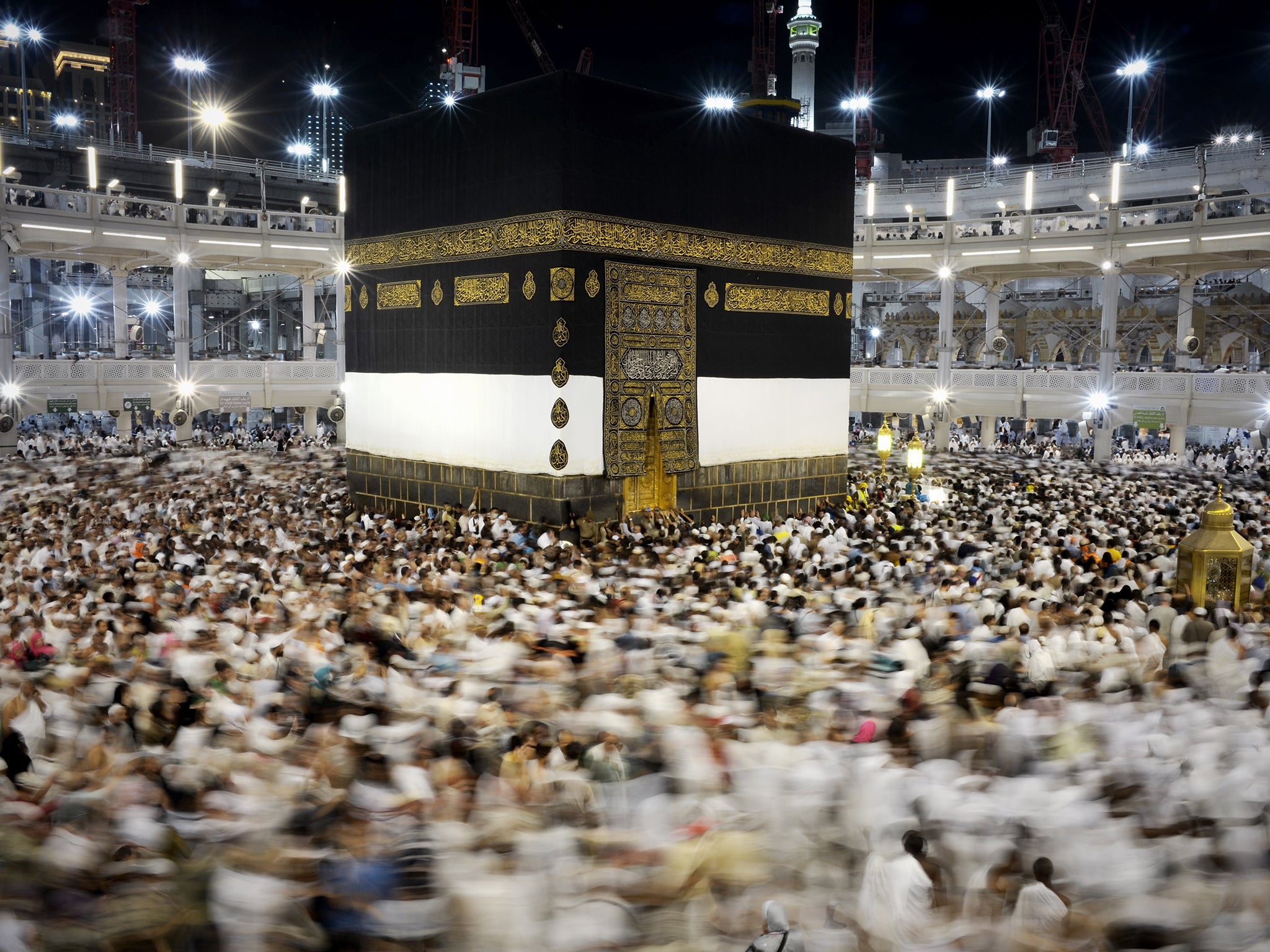Young Muslims will be experiencing Hajj in a very different way this year
The event is likely to be shared millions of times via social media even though in previous years cameras were even forbidden inside this space

Your support helps us to tell the story
From reproductive rights to climate change to Big Tech, The Independent is on the ground when the story is developing. Whether it's investigating the financials of Elon Musk's pro-Trump PAC or producing our latest documentary, 'The A Word', which shines a light on the American women fighting for reproductive rights, we know how important it is to parse out the facts from the messaging.
At such a critical moment in US history, we need reporters on the ground. Your donation allows us to keep sending journalists to speak to both sides of the story.
The Independent is trusted by Americans across the entire political spectrum. And unlike many other quality news outlets, we choose not to lock Americans out of our reporting and analysis with paywalls. We believe quality journalism should be available to everyone, paid for by those who can afford it.
Your support makes all the difference.When Snapchat ran a story on Mecca_live during Ramadan in 2015, it was the first time that the wider world had seen such an intimate portrait of one of the key places for the world’s 1.6 billion Muslims. Worshippers were busy posting pictures that expressed who they are and what is important to them, weaving the intensely physical rituals of Ramadan and pilgrimage into the virtual spaces of social media.
Millions of Muslim pilgrims are once again gathering in Mecca as the Hajj is about to begin. It highlights the Islamic concept of ‘ummah’ the global Muslim nation, where all Muslims regardless of wealth, race, language or culture are connected together as one body. This was historically an emotional and spiritual attachment, expressing love and solidarity over long distances. It was a matter for the heart and the fortunate few who could travel. But for today’s generation of young Muslims, through social media the ‘ummah’ has become real in a way that it never was before.
It has allowed them to cross over geographic, family and tribal boundaries to connect with Muslims anywhere in the world, hear their news, exchange ideas about what it means to be Muslim through shared values, and to build a community of purpose.
The role of the internet in the emergence of this new segment that believe faith and modernity go hand in hand has been particularly true for women. It is a space where they can ask questions, build solidarity with the wider Muslim women’s rights movement.
These young Muslims shop here too. In their aspiration to uphold and express their faith, they have gone to the bricks and mortar high street, and when they have found it lacking, turned to the internet where they have set up their own new businesses.
Cyberspace has given them access to wide audiences with the internet providing a platform for their businesses to flourish. And equally, having access through the internet to a vast array of products and services specifically tailored to their hope to live a full Muslim lifestyle has allowed them to purchase these products and reinforce their shared Muslim identity.
The democratisation of knowledge that the internet offers has opened up access for young Muslims to scholars and religious learning in a way that had never been possible. This has had many positive effects, including the foundation of online religious academies, or scholars who once sat on pedestals becoming accessible through status updates, and even sharing sermons via Snapchat. It has even led to the rise of the celebrity scholar, whose lectures are shared tens of thousands of times, and whose quotes get turned into memes. New music, vloggers and influencers that range from fashion designers to YouTube pranksters have been given a platform.
The challenge is that on the internet volume and quality can be a glossy cover for misguided religious information. And therefore in its dark recesses we know that danger lies.
But that is a small part of a much bigger story where young Muslims have found a space that for them is as powerful as the real world. They use it for social media campaigns that counter prevailing stereotypes, to create and disseminate content that expresses themselves on their own terms, and they use it – as with the Hajj – to be an integral part of the religious devotion.
What will happen with the Hajj over the coming days is the perfect example. The event is likely to be shared millions of times via social media even though in previous years cameras were even forbidden inside this space. This is giving an unprecedented view into the world of Muslims – its beauty, its diversity as well as how it is evolving with the times into the digital space.
Shelina Janmohamed is the author of “Generation M: Young Muslims Changing the World” published this week by IB Tauris.
Join our commenting forum
Join thought-provoking conversations, follow other Independent readers and see their replies
Comments